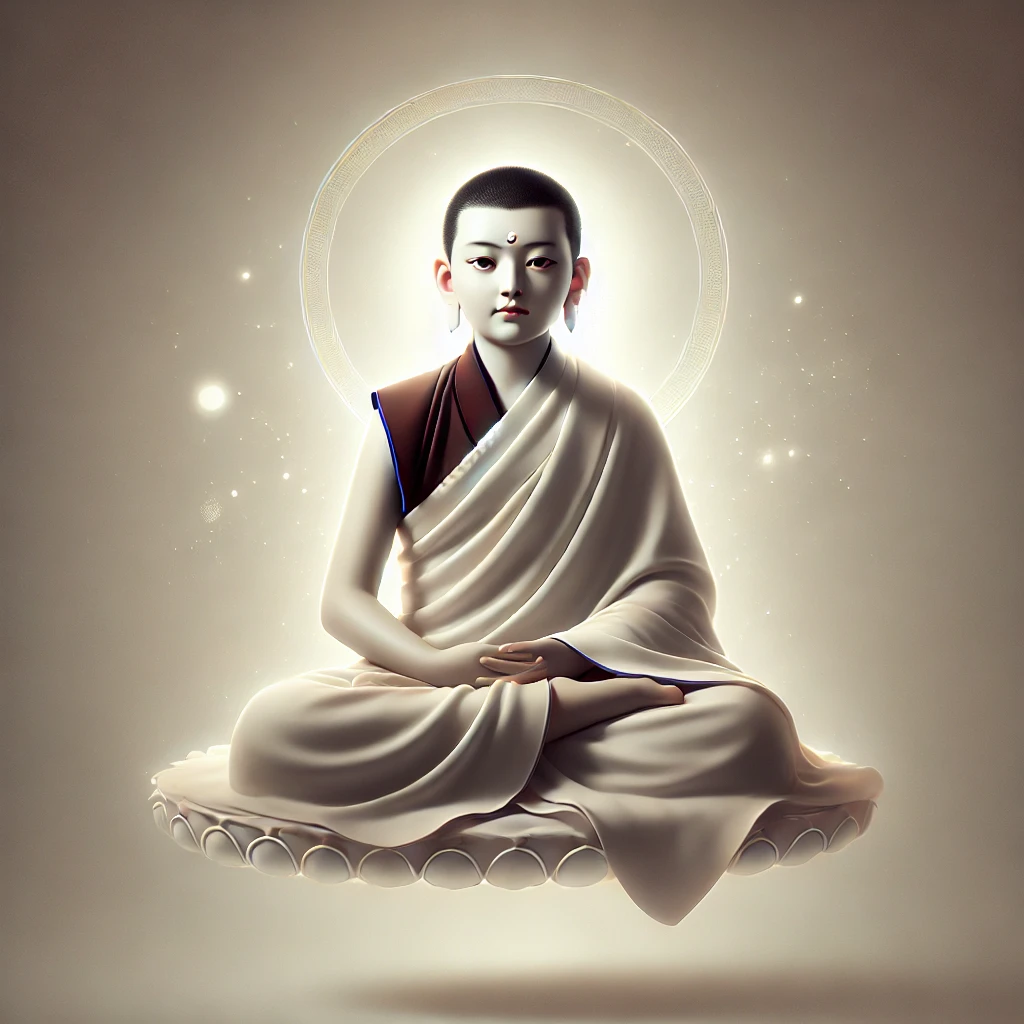**Tapihritsa**, or **Tapiritsa**, is a renowned *Dzogchen* master in the Bön tradition, often revered as one of the principal *Dzogchen* masters of ancient Tibet. A near-mythical figure, he is associated with the Bön school, one of Tibet's indigenous spiritual traditions. Although distinct from Tibetan Buddhism, Bön shares many similar teachings, particularly within *Dzogchen*, or the "Great Perfection." In the context of the Bön tradition, *Dzogchen* aims, like its Buddhist counterpart, to realize the fundamental nature of the mind, which is pure, luminous, and immutable.
Tapihritsa is believed to have lived around the 7th or 8th century and is often depicted as a radiant being, floating in open space—a symbol of the unbounded nature of the awakened mind. His story is primarily told through his relationship with his disciple and successor, **Dawa Gyaltsen**, to whom he transmitted the teachings of the *View*, *Meditation*, and *Conduct* of the Great Perfection.
In Tapihritsa’s teachings, recognizing the fundamental nature of the mind, referred to as *rigpa* or *ye shes* (primordial awareness), lies at the heart of *Dzogchen* practice. He emphasizes that all beings inherently possess this awakened nature, and that practice is merely the unveiling of this already perfect essence. He underscores the importance of transcending all mental constructions to achieve awakening. His famous instruction, as conveyed by his disciple, reflects this clearly: *“Look into the nature of the mind, and all illusion disappears.”*
Tapihritsa imparted a method known as the *Five Points of Dzogchen*, which provide practical and direct guidance for recognizing the ultimate nature of the mind. These five points are:
1. **Let the mind remain in its natural state**: Recognize its innate clarity without forcing or attempting to purify it through elaborate practices.
2. **Absence of fabrication**: Avoid mental elaborations and conceptual constructions.
3. **Integration into the natural view**: Maintain the mind’s purity in all aspects of daily life.
4. **Non-duality**: Understand that the distinction between the pure mind and external phenomena is an illusion.
5. **Union of clarity and emptiness**: Realize that the nature of the mind is both clear and empty—insubstantial yet infinitely present.
Tapihritsa’s *Dzogchen* teachings stand out for their emphasis on not confusing meditative absorption states with the true realization of the mind’s nature. Unlike other practices that focus on visualizations or mantras, Tapihritsa taught that the ultimate goal is to free oneself from all forms of mental attachment.
Tapihritsa’s teachings have a timeless resonance within the Bön tradition. The *Dzogchen* meditation lineage derived from his teachings continues to shape spiritual practices and training in the *View* within current Bön lineages. His words stress the simplicity and immediacy of awakening, liberated from concepts or excessive effort:
*“The nature of the mind is like the sky, open and boundless; it needs nothing to be what it already is.”*
To this day, Tapihritsa is honored as one of the great masters of the lineage, and his teachings on the *Great Perfection* remain a profound source of inspiration for *Dzogchen* practitioners. In Bön monasteries, he is often depicted in meditation, floating above the ground—a symbol of his unbound purity—teaching future generations that awakening is less a destination than the recognition of what has always been present.


 EN
EN